This little saying is borrowed from a friend of mine who is the National Guard currently serving in Afghanistan. Hi Ron! I think you get the picture about the weather here and the point that if we head into the field - rain or shine. The fact of the matter is that field work is expensive and scientists need to maximize their time in the field, especially when in a remote location. So long as we're wearing the appropriate clothing, it's just another day for us.
After we arrived at the lake we split into 2 teams; the lake team and the glacier team where the lake team performed a number of tasks at the lake, and the glacier team hiked to the Linne glacier to survey the Little Ice Age terminal moraine. I remained with the lake team to gather data from a number of sensors that have been in the field for a while. We started with changing out a memory card of a camera that's been taking 2 pictures a day of the Linne Lake since the early spring. To get to it, we needed to hike up a small igneous cliff face to a ledge where the camera was sitting in a protective housing and gathering its energy from a solar panel. The camera is the "scientists eyes" when they aren't around and will continue to take pictures every day and all year. Later in the evening when we downloaded the pictures, we saw that the camera captured the snow cover from April to the melting of the lake ice to the flow of the sediment plume into the lake. Comparing these photos to those of the previous year assists in identifying the timing of events at this lake system.
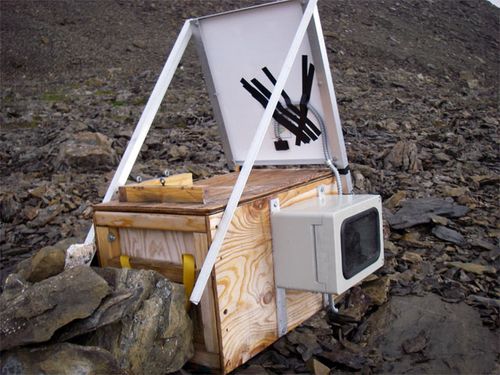
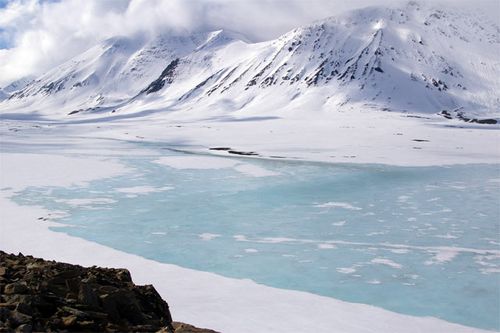
To handle a few tasks at the meltwater stream was where we headed off to next. The scientists (Al, Mike and Steve) are very interested in the behavior of this entire glacier, meltwater stream, lake system, and therefore data needs to be collected at various points along the system. The glacier team took one of the temperature sensors with them to change it with the temperature sensor in the stream at the point where the water runs off the glacier, and we changed the sensor at the midpoint. To do so meant to first locate the sensor that was placed in the stream the previous year, (thanks Mike for volunteering to put your hands in the cold water!) and attaching the new sensor. The data in the sensor was collected data every 30 minutes over the past year and will show the changes in temperature as the meltwater flowed to the lake. At 4 degrees Celsius water is at its densest and will tend to flow at a low point in the stream.
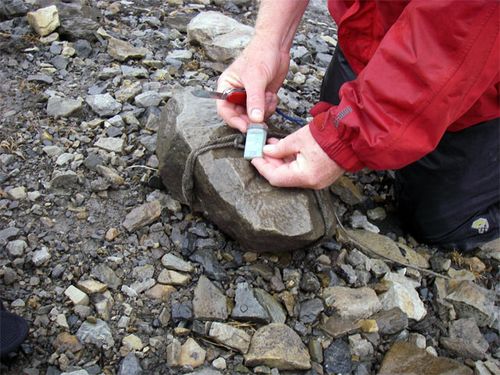
The final task was to measure the discharge at the low station in the stream. Here Svalbard REU students Emily and Maya volunteered to don the dry suits and take measurements while Megan recorded the data. The process included measuring the height of the stream at every meter across the stream and measuring the flow using a flow meter at the same points. This data is later combined to produce a discharge value of the stream at this location, and will be compared with the data from a point closer to the stream.
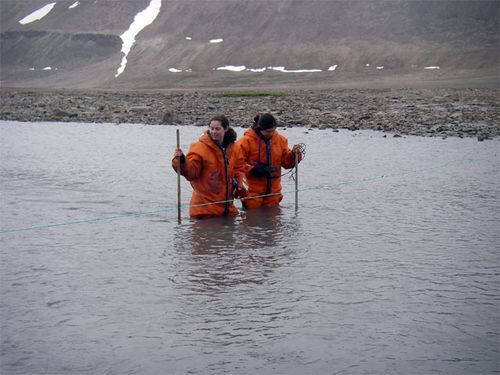
The glacier team arrived just as we finished signaling that it was time to journey back to the station to dry up.
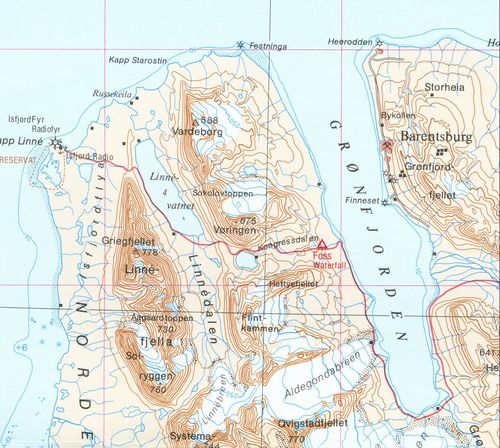
Challenge of the day: Using the topographic map of the Linne Valley, select places along the stream you think are important for collecting data. Why did you select these places?


Comments